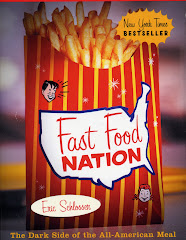-Meat packing plants are "put..close to feedlots--and far way from the urban strongholds of nation's labor unions". This kept the labor unions from investigating the brutal conditions of the meat packing plant as easily, and also allowed them to use trucks, instead of railroads, for transporting the meat.
2. How do wages in meat packing plants today compare with wages in the early 1900s, after the workers became unionized?
-Meatpacking butchers in the early 1900s organized many unions, hoping to improve the wages of this dangerous job. After World War 2, their wages improved tremendously, "exceeding the national average for workers in manufacturing". After Iowa Beef Packers, IBP, opened their meat packing industry, incorporating the McDonald's Speedee Service System into the meat packing industry, these wages were cut again. They de-skilled every job required by butchers, allowing them to employ immigrants who took much lower wages. It's still a high paying job, with above average income, but its still very dangerous.
3. What is the impact on small communities of having a meat packing firm?
-When IBP opened a new slaughterhouse in Lexington, Nebraska, in 1990, the effect was astounding. The crime rate soared, the town became a major distribution center for drugs, gangs ran rampant, and the whites of the town left, leaving the Hispanic population to become the majority. The slaughterhouse brought in many illegal immigrants, and many of the problems faced by towns harboring illegal aliens, with it.

No comments:
Post a Comment